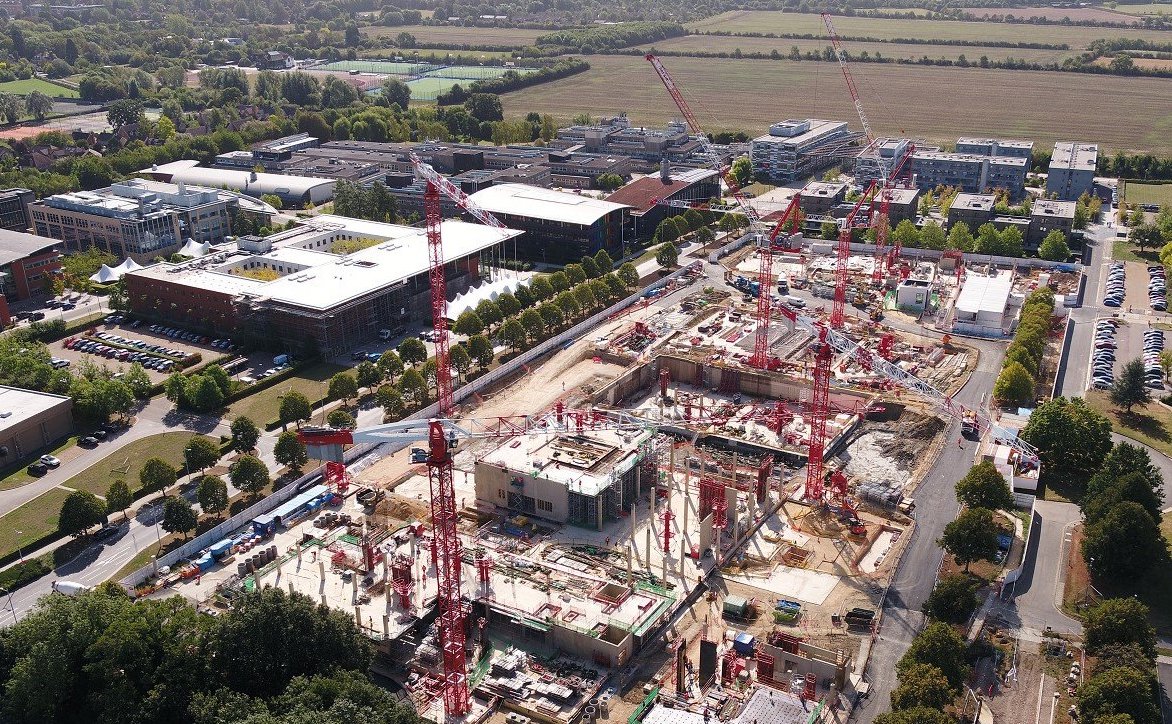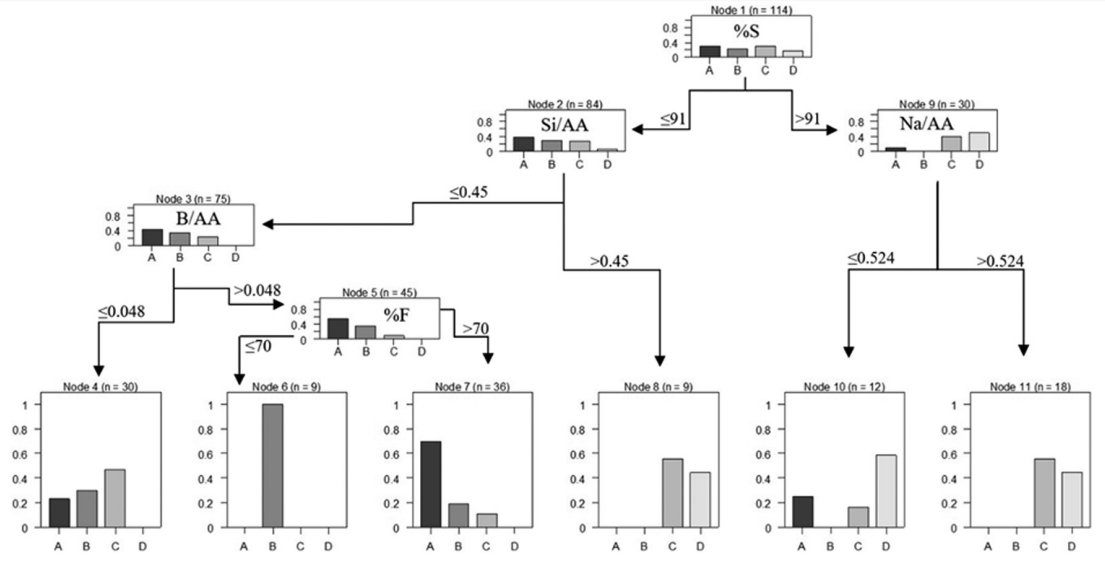A researcher from the Swinburne University of Technology and the director of French construction company Bouygues Travaux Publics, have used machine learning techniques to better understand the compressive strength of 3D printed construction materials.
Aiming to develop a process of classifying 3D printed geopolymer samples, the research team targeted specific variables, and optimized the makeup of the 3D printed materials using machine learning methods. The study could not only lead to the creation of construction composites exhibiting higher compressive strength, but also a roadmap for classifying the stability of other 3D printed compounds used in the construction industry.
“The aim is to introduce a feasible approach to classify geopolymer samples made via additive manufacturing techniques,” explained the team. “This study employed popular recursive partitioning functions including rpart and ctree, to build separate classification models. According to the findings, these functions demonstrate great ability to create models for 3D-printed geopolymers.”

Evaluating additive applications in construction
3D printing has been used in the construction process of many structures in recent years, and the methodology behind these projects has progressed rapidly. From the invention of the Construction Digital Fabrication (CDF) system in 1998, to Italian engineer Enrico Dini’s powder-based “D-Shape” 3D printer in 2007, the technology has advanced exponentially. Using cement mortar, the structural components in these ventures were 3D printed individually, and summarily assembled at the various building sites in an effective way.
Nonetheless, these enterprises also used a huge amount of cement, which incurred the high autogenous shrinkage, heat of hydration, and costs associated with the construction material. Cement manufacturing is also known to cause higher greenhouse gas emissions, which leads to higher energy consumption, and deteriorates the overall sustainability performance of 3D printed concrete structures.
Geopolymers on the other hand, offer a fast-setting, cost-effective and eco-friendly alternative. The materials also provide enhanced fire resistance and durability compared to conventional cement composites. Despite these benefits, using silicate compounds can be disadvantageous, not just because they too are known to cause environmental problems, but also due to their corrosive character. As a result, many efforts have been made by researchers to substitute the silicon and aluminium atoms of the geopolymer matrix, which are known to cause such harmful effects, with other elements.
The research team set out to utilize the vast amount of data produced in civil and construction engineering, to learn the patterns and classifications of 3D printed materials, and identify ways to overcome these drawbacks. Due to the complex nature of the information, the team used a modern computational approach, including conditional inference trees (ctree) and recursive partitioning (rpart) methods to draw conclusions. When geopolymer binder is 3D printed for instance, the number of effective factors on its strength are expanded by the printing parameters used. Given the range of independent variables, attempting to predict the compressive strength of printed geopolymer samples without the use of machine learning would generate a high level of error. Consequently, the researchers used learning algorithms to assess the printing variable, and investigated the factors that had the most significant impact on the compressive strength of the materials.

Classifying geopolymers using machine learning methods
A custom-made small-scale 3D printer was used to produce the geopolymers during testing. Featuring a piston-operated extruder, fresh geopolymer was extruded from a rectangular nozzle with a dimension of 30 mm x 15 mm. An external vibration was summarily applied to the extruder while loading the fresh mix, in order to ensure the mix inside received adequate compaction. Geopolymer filaments were then 3D printed in two lines horizontally for each sample, each with a dimension of 250 x 30 x 30 mm.
A total number of 114 specimens were measured, and an average conversion factor of 1.95 was applied to the dataset. Initial analysis of the geopolymer formations using the ctree function confirmed the significance of the contribution of slag in the geopolymer mix design. Slag-dominated mix designs resulted in higher compressive strength, while raising the ratio of silicate to above 0.45, was found to increase the strength of the geopolymer material. Moreover, utilizing the rpart function, which didn’t use the ratio of sodium ions to create the prediction model, the team were able to accurately predict the category of compressive strength for 70% of the specimens produced. Overall, the research team were able to create classification models for 3D-printed geopolymers, with up to 100% positive predictive value using the ctree function, and up to 81% with the rpart function.
Utilizing these supervised machine learning algorithms, the research team were able to accurately classify and predict the compressive strength of 3D-printed boron-based geopolymer concrete. While the rpart function only used two factors to generate these predictions, ctree used four, and this was reflected in the more generous strength attributed by the rpart function to the cement samples. In addition, the importance of the percentage of slag and the ratio of boron ions in geopolymer makeup, were successfully identified by the ctree and rpart functions respectively. As a result, the study could become an important building block for understanding how to design stronger and more eco-friendly 3D printed building materials, or even a starting point for developing a guide, according to the team.
“Supervised machine learning algorithms were utilised for classifying the 3D-printed boron-based geopolymer concrete,” concluded the research team. “This study could be an excellent starting point for developing a guide or standard that maps the 3D-printed boron-based geopolymer samples into categories based on compressive strength.”

Additive manufacturing in the construction industry
Researchers have used 3D printing to develop a range of cement mixtures in recent years, displaying enhanced stability and durability benefits for use in the construction sector.
Researchers from the University of Messina for instance, have formulated a lightweight foamed concrete to more effectively 3D print building structures without the need for any formwork. The novel material (3DPC) is able to retain its shape in its ‘molten’ or ‘fresh’ state due to a very high viscosity.
Arizona-based 3D Construction Printing Company Armatron, have been granted an extensive patent for a high-speed extrusion 3D printing method that produces reinforced cement structures. With the technology, the company aims to overcome the current limitations of conventional construction, with sustainable, full-scale 3D printed structures.
A research team from Purdue University have developed a springy, twisty and crack resistant alternative to cement. By investigating current weaknesses (such as non-uniformity in microstructure) present in 3D printed cement structures, the researchers are challenging the brittle nature of the materials.
The researchers’ findings are detailed in their paper titled “Formulation of mix design for 3D printing of geopolymers: a machine learning approach” published in the Material Advances journal on May 27th 2020. The report was co-authored by Ali Bagheri and Christian Cremona.
You can now nominate for the 2020 3D Printing Industry Awards. Cast your vote to help decide this year’s winners.
To stay up to date with the latest 3D printing news, don’t forget to subscribe to the 3D Printing Industry newsletter or follow us on Twitter or liking our page on Facebook.
Looking for a job in the additive manufacturing industry? Visit 3D Printing Jobs for a selection of roles in the industry.
Featured image shows one of French firm Bouygues Travaux Publics’ construction sites. The company’s director was part of the research project team. Image via Bouygues Travaux Publics.



